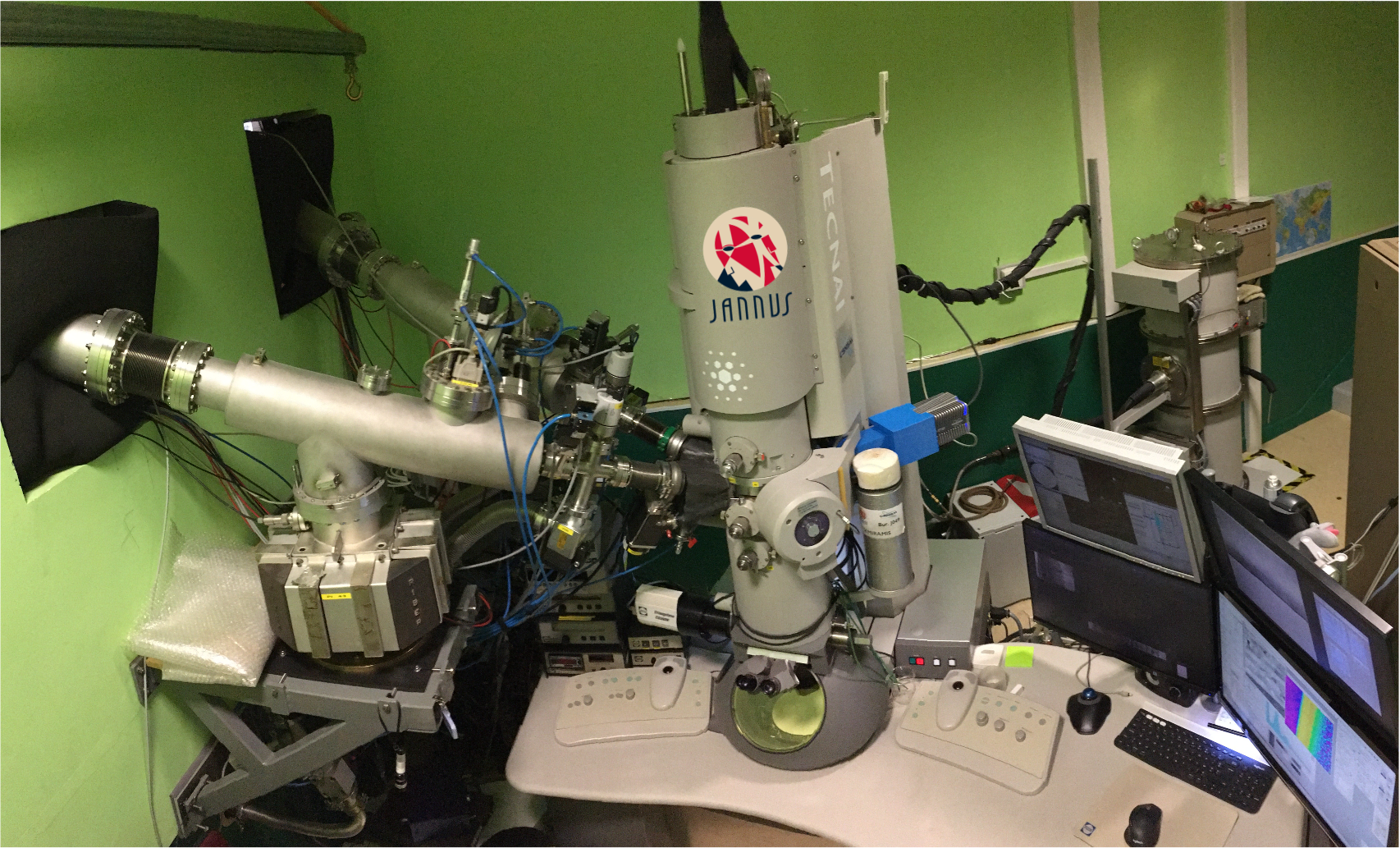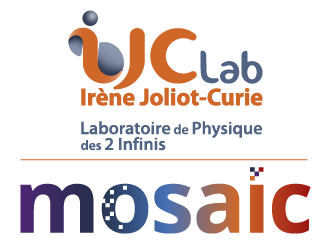The particularity of the transmission electron microscope (TEM) of the MOSAIC platform is its coupling to the ARAMIS and IRMA ion accelerators in the JANNuS-Orsay experimental hall, allowing the simultaneous ion implantation and irradiation of materials in situ in the microscope.

The transmission electron microscope (characteristics) is placed below the level of the accelerators on an anti-vibration base. The ion beam lines from ARAMIS and IRMA are deflected downwards and enter the TEM column at 22° from the horizontal plane, with an angle of 45° between them in the horizontal plane. The vibrations brought by the lines of ion beams are suppressed by the decoupling using bellows, the damping of the lines and a rapid coupling/decoupling system. The choice of the microscope was mainly dictated by the possibility of having large openings for the ion beams allowing the introduction of Faraday cages for the continuous measurement of the ion currents arriving on the sample, in order to guarantee the accuracy and reproducibility of the dose rate with a maximum deviation of 10%. An ultra-thin heating object holder was designed to minimize shadow effects due to the geometry of the system. A minimum surface of 1.5mm², irradiated by the two ion beams, is observable whatever the inclination of the sample (angles α and β varying between 0 and 30°).
References
- Investigating radiation damage in nuclear energy materials using JANNuS multiple ion beams, A. Gentils, C. Cabet, Nuclear Instruments and Methods B 447 (2019) 107-112 doi
- In situ Transmission Electron Microscopy Ion Irradiation Studies at Orsay, M.-O. Ruault, F. Fortuna, H. Bernas, J. Chaumont, O. Kaïtasov, V.A. Borodin, Journal of Materials Research 20 (2005) 1758-1768 doi
Contact
TEM technical manager: Dr Cédric Baumier
For in situ TEM experiments with ion accelerators, you must submit a request during the annual call for experiment proposals (generally in September-October) on the EMIR&A federation website, after discussing it with local contacts (Cédric Baumier, Aurélie Gentils, Stéphanie Jublot-Leclerc).
For any request for accessing the microscope, please contact the microscopists who examine new projects and new investments around the microscope and sample preparation: mosaic@ijclab.in2p3.fr







